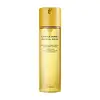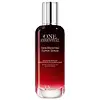What's inside
What's inside
 Key Ingredients
Key Ingredients

No key ingredients
 Benefits
Benefits

 Concerns
Concerns

 Ingredients Side-by-side
Ingredients Side-by-side

Honey Extract 42%
HumectantWater
Skin ConditioningButylene Glycol
HumectantGlycerin
HumectantDipropylene Glycol
HumectantAlcohol
AntimicrobialPEG-32
HumectantAdenosine
Skin ConditioningPanthenol
Skin ConditioningLactobacillus/Soybean Ferment Extract
Skin ConditioningDioscorea Japonica Root Extract
Skin ConditioningTremella Fuciformis Extract
HumectantDipotassium Glycyrrhizate
HumectantBrassica Oleracea Italica Extract
AstringentAloe Barbadensis Leaf Extract
EmollientCitrus Unshiu Peel Extract
MaskingActinidia Chinensis Fruit Extract
EmollientPersea Gratissima Fruit Extract
EmollientCymbopogon Schoenanthus Extract
Skin ConditioningPortulaca Oleracea Extract
Skin ConditioningPEG-40 Hydrogenated Castor Oil
EmulsifyingPPG-26-Buteth-26
Skin ConditioningCarbomer
Emulsion StabilisingGlyceryl Acrylate/Acrylic Acid Copolymer
HumectantCeratonia Siliqua Gum
EmollientDextrin
AbsorbentSodium Chondroitin Sulfate
Skin ConditioningPhenoxyethanol
PreservativeParfum
MaskingEthylhexylglycerin
Skin ConditioningPotassium Hydroxide
BufferingDisodium EDTA
CI 19140
Cosmetic ColorantCI 14700
Cosmetic ColorantHoney Extract 42%, Water, Butylene Glycol, Glycerin, Dipropylene Glycol, Alcohol, PEG-32, Adenosine, Panthenol, Lactobacillus/Soybean Ferment Extract, Dioscorea Japonica Root Extract, Tremella Fuciformis Extract, Dipotassium Glycyrrhizate, Brassica Oleracea Italica Extract, Aloe Barbadensis Leaf Extract, Citrus Unshiu Peel Extract, Actinidia Chinensis Fruit Extract, Persea Gratissima Fruit Extract, Cymbopogon Schoenanthus Extract, Portulaca Oleracea Extract, PEG-40 Hydrogenated Castor Oil, PPG-26-Buteth-26, Carbomer, Glyceryl Acrylate/Acrylic Acid Copolymer, Ceratonia Siliqua Gum, Dextrin, Sodium Chondroitin Sulfate, Phenoxyethanol, Parfum, Ethylhexylglycerin, Potassium Hydroxide, Disodium EDTA, CI 19140, CI 14700
Water
Skin ConditioningButylene Glycol
HumectantGlycerin
HumectantCaprylic/Capric/Succinic Triglyceride
EmollientAlcohol
AntimicrobialPolymethylsilsesquioxane
Maltitol
HumectantPEG-60 Hydrogenated Castor Oil
EmulsifyingPhenoxyethanol
PreservativePEG-32
HumectantPEG-8
HumectantDecyloxazolidinone
AntimicrobialAcrylates/C10-30 Alkyl Acrylate Crosspolymer
Emulsion StabilisingPEG-7 Glyceryl Cocoate
EmulsifyingTetrasodium EDTA
Parfum
MaskingMalva Sylvestris Extract
AstringentHibiscus Sabdariffa Flower Extract
Skin ConditioningFaex
Skin ConditioningSodium Hydroxide
BufferingLecithin
EmollientSqualane
EmollientPyrus Cydonia Seed Extract
MaskingAlcaligenes Polysaccharides
EmollientDimethylmethoxy Chromanol
AntioxidantAdenosine
Skin ConditioningXanthan Gum
EmulsifyingSorbitol
HumectantBiosaccharide Gum-1
HumectantSodium Metabisulfite
AntioxidantSodium Tocopheryl Phosphate
AntioxidantAlgin
MaskingAframomum Angustifolium Seed Extract
Skin ConditioningButylphenyl Methylpropional
PerfumingPolyvinyl Alcohol
Limonene
PerfumingHaberlea Rhodopensis Leaf Extract
Skin ConditioningBenzyl Alcohol
PerfumingCitric Acid
BufferingCellulose Gum
Emulsion StabilisingEthylhexylglycerin
Skin ConditioningAlpha-Isomethyl Ionone
PerfumingGeraniol
PerfumingLilium Candidum Bulb Extract
Skin ConditioningPhaeodactylum Tricornutum Extract
HumectantDehydroacetic Acid
PreservativeBHT
AntioxidantTocopherol
AntioxidantWater, Butylene Glycol, Glycerin, Caprylic/Capric/Succinic Triglyceride, Alcohol, Polymethylsilsesquioxane, Maltitol, PEG-60 Hydrogenated Castor Oil, Phenoxyethanol, PEG-32, PEG-8, Decyloxazolidinone, Acrylates/C10-30 Alkyl Acrylate Crosspolymer, PEG-7 Glyceryl Cocoate, Tetrasodium EDTA, Parfum, Malva Sylvestris Extract, Hibiscus Sabdariffa Flower Extract, Faex, Sodium Hydroxide, Lecithin, Squalane, Pyrus Cydonia Seed Extract, Alcaligenes Polysaccharides, Dimethylmethoxy Chromanol, Adenosine, Xanthan Gum, Sorbitol, Biosaccharide Gum-1, Sodium Metabisulfite, Sodium Tocopheryl Phosphate, Algin, Aframomum Angustifolium Seed Extract, Butylphenyl Methylpropional, Polyvinyl Alcohol, Limonene, Haberlea Rhodopensis Leaf Extract, Benzyl Alcohol, Citric Acid, Cellulose Gum, Ethylhexylglycerin, Alpha-Isomethyl Ionone, Geraniol, Lilium Candidum Bulb Extract, Phaeodactylum Tricornutum Extract, Dehydroacetic Acid, BHT, Tocopherol
Ingredients Explained
These ingredients are found in both products.
Ingredients higher up in an ingredient list are typically present in a larger amount.
Adenosine is in every living organism. It is one of four components in nucleic acids that helps store our DNA.
Adenosine has many benefits when used. These benefits include hydrating the skin, smoothing skin, and reducing wrinkles. Once applied, adenosine increases collagen production. It also helps with improving firmness and tissue repair.
Studies have found adenosine may also help with wound healing.
In skincare products, Adenosine is usually derived from yeast.
Learn more about AdenosineAlcohol comes in many different forms. Different types of alcohol will have different effects on skin. This ingredient is usually an astringent alcohol.
These alcohols are drying on the skin. They may strip away your skin's natural oils and even damage your skin barrier. Astringent alcohols may also irritate skin.
Other types of astringent alcohols include:
According to the National Rosacea Society based in the US, you should be mindful of products with these alcohols in the top half of ingredients.
Any type of sanitizing product will have high amounts of alcohol to help kill bacteria and viruses.
Fatty alcohols come from plant oils such as coconut oil. These can help hydrate the skin and are non-irritating. Some fatty alcohols include cetyl and stearyl alcohol.
Learn more about AlcoholButylene Glycol (or BG) is used within cosmetic products for a few different reasons:
Overall, Butylene Glycol is a safe and well-rounded ingredient that works well with other ingredients.
Though this ingredient works well with most skin types, some people with sensitive skin may experience a reaction such as allergic rashes, closed comedones, or itchiness.
Learn more about Butylene GlycolEthylhexylglycerin (we can't pronounce this either) is commonly used as a preservative and skin softener. It is derived from glyceryl.
You might see Ethylhexylglycerin often paired with other preservatives such as phenoxyethanol. Ethylhexylglycerin has been found to increase the effectiveness of these other preservatives.
Glycerin is already naturally found in your skin. It helps moisturize and protect your skin.
A study from 2016 found glycerin to be more effective as a humectant than AHAs and hyaluronic acid.
As a humectant, it helps the skin stay hydrated by pulling moisture to your skin. The low molecular weight of glycerin allows it to pull moisture into the deeper layers of your skin.
Hydrated skin improves your skin barrier; Your skin barrier helps protect against irritants and bacteria.
Glycerin has also been found to have antimicrobial and antiviral properties. Due to these properties, glycerin is often used in wound and burn treatments.
In cosmetics, glycerin is usually derived from plants such as soybean or palm. However, it can also be sourced from animals, such as tallow or animal fat.
This ingredient is organic, colorless, odorless, and non-toxic.
Glycerin is the name for this ingredient in American English. British English uses Glycerol/Glycerine.
Learn more about GlycerinParfum is a catch-all term for an ingredient or more that is used to give a scent to products.
Also called "fragrance", this ingredient can be a blend of hundreds of chemicals or plant oils. This means every product with "fragrance" or "parfum" in the ingredients list is a different mixture.
For instance, Habanolide is a proprietary trade name for a specific aroma chemical. When used as a fragrance ingredient in cosmetics, most aroma chemicals fall under the broad labeling category of “FRAGRANCE” or “PARFUM” according to EU and US regulations.
The term 'parfum' or 'fragrance' is not regulated in many countries. In many cases, it is up to the brand to define this term.
For instance, many brands choose to label themselves as "fragrance-free" because they are not using synthetic fragrances. However, their products may still contain ingredients such as essential oils that are considered a fragrance by INCI standards.
One example is Calendula flower extract. Calendula is an essential oil that still imparts a scent or 'fragrance'.
Depending on the blend, the ingredients in the mixture can cause allergies and sensitivities on the skin. Some ingredients that are known EU allergens include linalool and citronellol.
Parfum can also be used to mask or cover an unpleasant scent.
The bottom line is: not all fragrances/parfum/ingredients are created equally. If you are worried about fragrances, we recommend taking a closer look at an ingredient. And of course, we always recommend speaking with a professional.
Learn more about ParfumPEG-32 is a synthetic and water-soluble polymer with 32 repeating units. It has humectant, solvent, and emulsifying properties.
As a solvent and emulsifier, it helps dissolve and blend ingredients. It is also able to attract water as a humectant to help hydrate skin. According to a manufacturer, this ingredient is non-greasy, gentle, and mildly scented.
Japanese manufacturers will sometimes call this ingredient PEG 1540.
Learn more about PEG-32Phenoxyethanol is a preservative that has germicide, antimicrobial, and aromatic properties. Studies show that phenoxyethanol can prevent microbial growth. By itself, it has a scent that is similar to that of a rose.
It's often used in formulations along with Caprylyl Glycol to preserve the shelf life of products.
Water. It's the most common cosmetic ingredient of all. You'll usually see it at the top of ingredient lists, meaning that it makes up the largest part of the product.
So why is it so popular? Water most often acts as a solvent - this means that it helps dissolve other ingredients into the formulation.
You'll also recognize water as that liquid we all need to stay alive. If you see this, drink a glass of water. Stay hydrated!
Learn more about Water